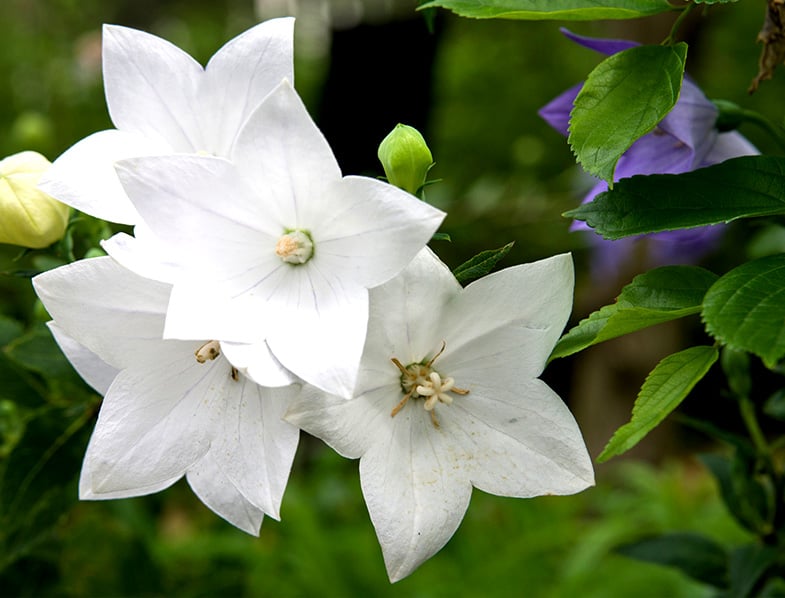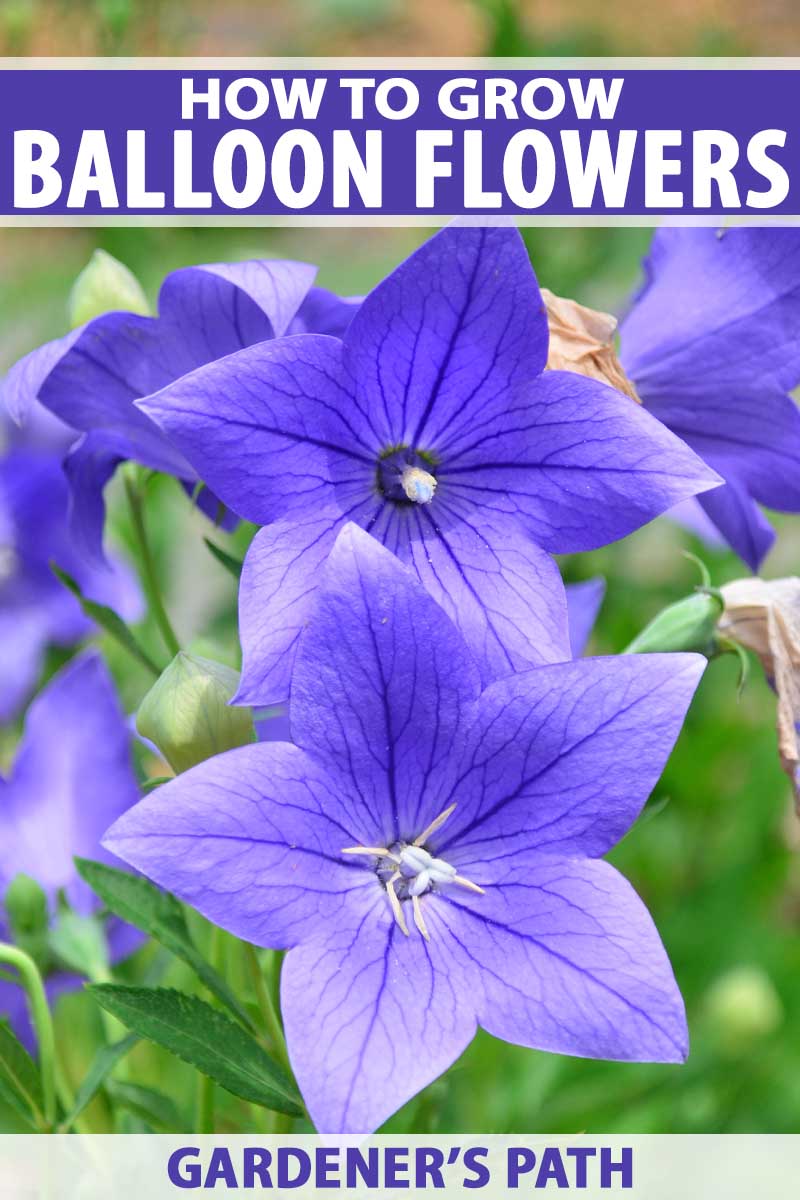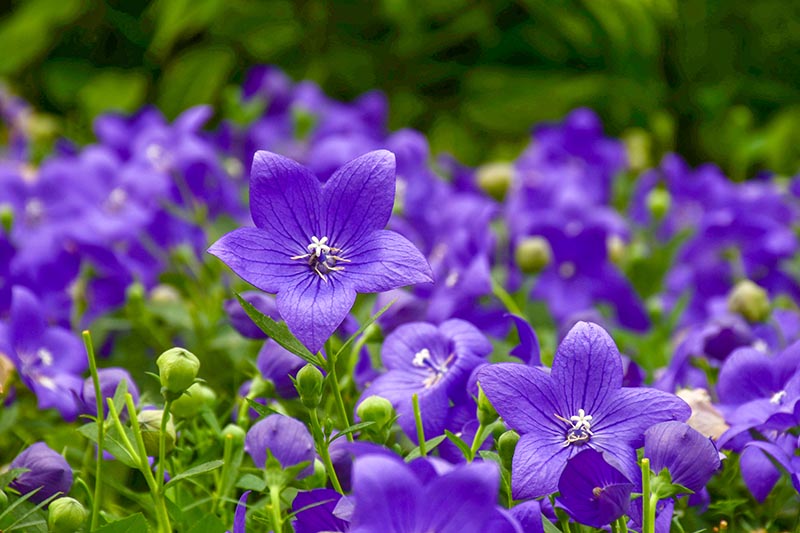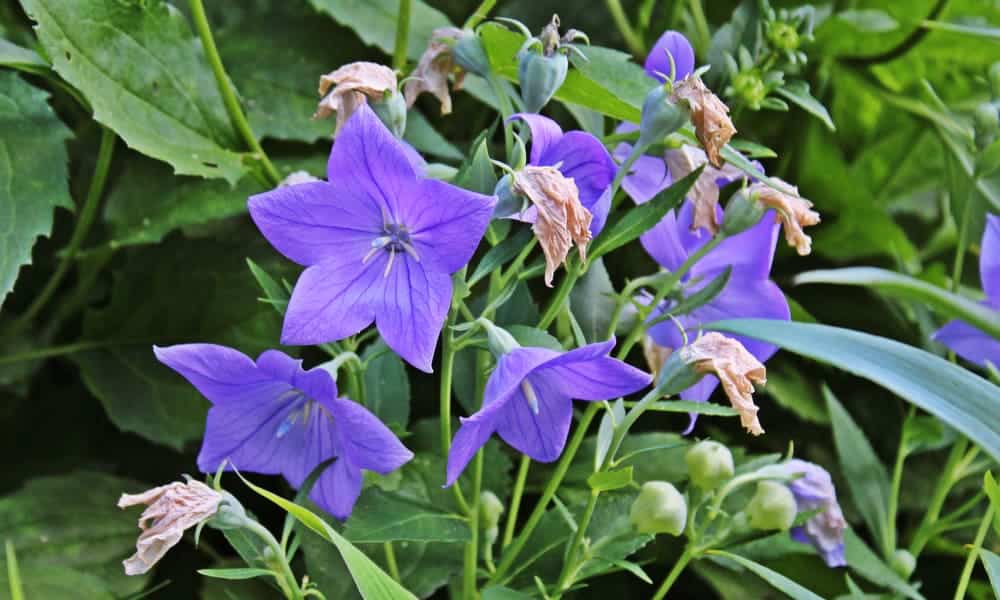Unlocking the Secrets of Platycodon Grandiflorus
The balloon flower (Platycodon grandiflorus) is a delicate and charming perennial that has captivated gardeners with its unique characteristics and beauty. Native to East Asia, this flowering plant has become a popular choice for gardens worldwide, thanks to its relatively low maintenance requirements and stunning blooms. However, to unlock the full potential of the balloon flower, it is essential to understand the importance of proper care. By learning how to care for balloon flowers, gardeners can enjoy optimal growth, vibrant blooms, and a thriving plant that brings joy and beauty to their outdoor space.
One of the key reasons why balloon flowers have become a favorite among gardeners is their ability to thrive in a variety of conditions. However, this does not mean that they can tolerate neglect or poor care. In fact, balloon flowers require specific conditions to bloom profusely and maintain their health. By understanding the needs of these plants, gardeners can create an environment that fosters optimal growth and blooming. This includes providing the right amount of sunlight, water, and nutrients, as well as pruning and training the plant to maintain its shape and promote healthy growth.
Proper care for balloon flowers also involves protecting them from pests and diseases that can damage the plant and reduce its blooming potential. By learning how to identify common pests and diseases, gardeners can take proactive steps to prevent infestations and infections, and ensure that their plants remain healthy and thriving. Additionally, understanding how to deadhead and divide balloon flowers can help promote more blooms and maintain plant health, making it an essential part of any balloon flower care routine.
As the seasons change, balloon flowers require special care to prepare them for the next year’s bloom. This includes providing proper winter care, such as mulching and dividing, as well as collecting seeds to propagate new plants. By understanding the specific needs of balloon flowers during the winter months, gardeners can ensure that their plants remain healthy and thrive, even in the coldest of temperatures.
By following these guidelines and learning how to care for balloon flowers, gardeners can unlock the full potential of these beautiful plants and enjoy a stunning display of blooms in their garden. Whether you are a seasoned gardener or just starting out, understanding the needs of balloon flowers is essential for creating a thriving and beautiful outdoor space.
Choosing the Perfect Location: Sunlight, Soil, and Space
When it comes to how to care for balloon flowers, selecting the perfect location is crucial for optimal growth and blooming. Balloon flowers require a location that receives full sun to partial shade, depending on the climate and region. In warmer climates, it’s essential to provide some afternoon shade to prevent scorching of the leaves and flowers. In cooler climates, full sun is ideal for promoting healthy growth and blooming.
In terms of soil, balloon flowers prefer well-draining, fertile soil that is rich in organic matter. A slightly acidic to neutral soil pH, ranging from 6.0 to 7.0, is ideal for balloon flowers. Avoid planting in areas with standing water or where water tends to collect, as this can lead to root rot and other problems. If your soil is heavy clay or sandy, amend it with compost or well-rotted manure to improve its structure and fertility.
Spacing is also an essential consideration when planting balloon flowers. Plant them 12 to 18 inches apart, depending on the variety, to allow for good air circulation and prevent overcrowding. Overcrowding can lead to increased susceptibility to disease and pests, so make sure to provide enough space for your balloon flowers to grow and thrive.
When selecting a location for your balloon flowers, also consider the surrounding plants and structures. Avoid planting near trees or shrubs that may compete with your balloon flowers for water and nutrients. Also, keep in mind that balloon flowers can grow quite tall, up to 3 feet or more, so provide support if necessary to prevent them from toppling over in the wind.
By choosing the perfect location for your balloon flowers, you’ll be well on your way to providing them with the optimal conditions they need to thrive. Remember to consider sunlight, soil, and space when selecting a location, and don’t hesitate to amend your soil or provide support if necessary. With proper care and attention, your balloon flowers will reward you with stunning blooms and a beautiful display of delicate beauty.
Watering Wisdom: How to Hydrate Your Balloon Flowers
Proper watering is essential for the health and well-being of balloon flowers. When learning how to care for balloon flowers, it’s crucial to understand the importance of watering techniques to ensure optimal growth and blooming. Balloon flowers require consistent moisture, especially during the first growing season after planting. However, overwatering can be detrimental to the plant, leading to root rot and other problems.
The frequency of watering balloon flowers depends on the climate and soil type. In general, balloon flowers require about 1-2 inches of water per week, either from rainfall or irrigation. It’s essential to check the soil moisture by inserting your finger into the soil up to the first knuckle. If the soil feels dry, it’s time to water. If it’s already moist, wait another day or two before watering again.
The timing of watering is also critical. Water balloon flowers in the morning, so the plants have the entire day to absorb the water. Avoid watering in the evening, as this can encourage fungal growth and other problems. Also, avoid getting water on the leaves or flowers to prevent fungal diseases. Instead, water at the base of the plant, allowing the soil to absorb the moisture.
Underwatering can also be a problem for balloon flowers. If the soil is too dry for an extended period, the plant may drop its buds or fail to bloom. On the other hand, overwatering can lead to root rot, which can be fatal to the plant. To avoid these problems, monitor the soil moisture regularly and adjust your watering schedule accordingly.
By understanding the importance of proper watering techniques, you can provide your balloon flowers with the right amount of moisture to thrive. Remember to water consistently, avoid overwatering, and monitor the soil moisture regularly. With proper care and attention, your balloon flowers will reward you with stunning blooms and a beautiful display of delicate beauty.
Fertilizing for Success: Feeding Your Balloon Flowers
Fertilizing is an essential part of how to care for balloon flowers. Balloon flowers require a balanced diet of nutrients to promote healthy growth and blooming. A well-fertilized plant will produce more blooms, have a stronger stem, and be less susceptible to disease and pests.
When it comes to fertilizing balloon flowers, it’s essential to choose a balanced fertilizer that contains equal amounts of nitrogen, phosphorus, and potassium (NPK). A 10-10-10 NPK fertilizer is an excellent choice for balloon flowers. You can also use a fertilizer that is specifically formulated for flowering plants, as these tend to have a higher phosphorus content, which promotes blooming.
Apply the fertilizer in the early growing season, when the plant is about 6-8 inches tall. Follow the instructions on the fertilizer package for the recommended application rate. It’s also a good idea to fertilize again after the plant has finished blooming, to promote healthy growth and prepare the plant for the next year’s bloom.
Organic fertilizers, such as compost or well-rotted manure, can also be used to fertilize balloon flowers. These types of fertilizers release nutrients slowly, providing a steady supply of nutrients to the plant. They also help to improve the soil structure and promote beneficial microbial activity.
It’s essential to avoid overfertilizing balloon flowers, as this can damage the plant and lead to weak growth. Also, avoid fertilizing during the winter months, as the plant is dormant and doesn’t require nutrients during this time.
By fertilizing your balloon flowers regularly, you can promote healthy growth, encourage blooming, and enjoy a beautiful display of delicate beauty in your garden. Remember to choose a balanced fertilizer, follow the instructions on the package, and avoid overfertilizing to ensure the best results.
Pruning and Training: Shaping Your Balloon Flowers
Pruning and training are essential techniques for maintaining the shape and promoting the blooming of balloon flowers. By learning how to care for balloon flowers through pruning and training, you can encourage healthy growth, promote more blooms, and maintain the overall appearance of your plants.
Pruning balloon flowers involves removing dead or damaged stems and leaves, as well as shaping the plant to maintain its desired shape. Use a pair of clean and sharp pruning shears to remove any dead or damaged growth, cutting just above a node (where a leaf meets the stem). This will help the plant to heal quickly and reduce the risk of disease.
Training balloon flowers involves providing support for the stems as they grow. Balloon flowers can grow quite tall, up to 3 feet or more, and may require staking to prevent them from toppling over in the wind. Use a bamboo stake or a trellis to provide support for the stems, tying them gently to the stake using twine or a soft material.
Deadheading is also an important part of pruning and training balloon flowers. Deadheading involves removing spent blooms to encourage the plant to produce more flowers. Use a pair of clean and sharp pruning shears to remove the spent blooms, cutting just above a node. This will help the plant to focus its energy on producing more blooms rather than seed production.
By pruning and training your balloon flowers regularly, you can maintain their shape, promote healthy growth, and encourage more blooms. Remember to prune and train your plants gently, as they can be delicate and may be damaged easily. With proper care and attention, your balloon flowers will thrive and provide a beautiful display of delicate beauty in your garden.
Pest and Disease Management: Protecting Your Balloon Flowers
When learning how to care for balloon flowers, it’s essential to understand the common pests and diseases that can affect these delicate plants. By knowing how to prevent and control infestations and infections, you can protect your balloon flowers and ensure they thrive in your garden.
Aphids are one of the most common pests that can affect balloon flowers. These small, soft-bodied insects feed on the sap of the plant, causing curled or distorted leaves. To control aphids, use a strong jet of water to blast them off the plant, or apply insecticidal soap or neem oil.
Slugs and snails can also be a problem for balloon flowers, especially at night when they emerge to feed on the leaves and flowers. To control slugs and snails, use copper tape or crushed eggshells around the base of the plant to deter them, or apply a slug and snail bait.
Powdery mildew is a common disease that can affect balloon flowers, causing a white, powdery coating to form on the leaves. To prevent powdery mildew, ensure good air circulation around the plant, and avoid overhead watering. If the disease does occur, use a fungicide specifically designed for powdery mildew.
Other pests and diseases that can affect balloon flowers include spider mites, mealybugs, and root rot. To prevent these problems, ensure good garden hygiene, remove any infected plants, and use organic or chemical controls as needed.
By understanding the common pests and diseases that can affect balloon flowers, you can take steps to prevent and control infestations and infections. Remember to monitor your plants regularly, and take action quickly if you notice any problems. With proper care and attention, your balloon flowers will thrive and provide a beautiful display of delicate beauty in your garden.
Deadheading and Division: Encouraging More Blooms
Deadheading and division are two essential techniques for promoting more blooms and maintaining plant health in balloon flowers. By learning how to care for balloon flowers through deadheading and division, you can encourage your plants to produce more flowers and maintain their overall health and vigor.
Deadheading involves removing spent blooms from the plant to encourage it to produce more flowers. This technique is especially effective for balloon flowers, as it allows the plant to focus its energy on producing new blooms rather than seed production. To deadhead your balloon flowers, simply remove the spent blooms with a pair of clean and sharp pruning shears, cutting just above a node (where a leaf meets the stem).
Division is another technique for promoting more blooms and maintaining plant health in balloon flowers. Division involves dividing the plant into smaller sections, each with its own roots and growth nodes. This technique allows you to propagate new plants and maintain the health and vigor of your existing plants. To divide your balloon flowers, simply dig up the entire plant, gently separate the roots, and replant the sections in well-draining soil.
By deadheading and dividing your balloon flowers regularly, you can encourage your plants to produce more blooms and maintain their overall health and vigor. Remember to deadhead your plants regularly, and divide them every 3-4 years to maintain their health and promote new growth.
Deadheading and division are just two of the many techniques for promoting more blooms and maintaining plant health in balloon flowers. By learning how to care for balloon flowers through these techniques, you can enjoy a beautiful display of delicate beauty in your garden for years to come.
Winter Care and Propagation: Preparing for Next Year’s Bloom
When learning how to care for balloon flowers, it’s essential to understand the importance of proper winter care and propagation techniques. By preparing your plants for the winter months and propagating new plants, you can ensure a beautiful display of blooms next year.
Mulching is a crucial step in winter care for balloon flowers. Apply a layer of mulch around the base of the plant to protect the roots from freezing temperatures and prevent moisture loss. You can use organic mulch like straw or bark chips, or inorganic mulch like plastic sheeting.
Dividing is another important technique for balloon flower care. Divide your plants every 3-4 years to maintain their health and promote new growth. Dig up the entire plant, gently separate the roots, and replant the sections in well-draining soil.
Seed collection is also a great way to propagate new balloon flowers. Allow the flowers to go to seed, and then collect the seeds in the fall. Sow the seeds indoors in the spring, and transplant them outside when the weather warms up.
By following these winter care and propagation techniques, you can ensure a beautiful display of blooms next year. Remember to mulch your plants, divide them regularly, and collect seeds to propagate new plants.
Proper winter care and propagation are essential for maintaining the health and beauty of your balloon flowers. By following these techniques, you can enjoy a stunning display of delicate beauty in your garden for years to come.









